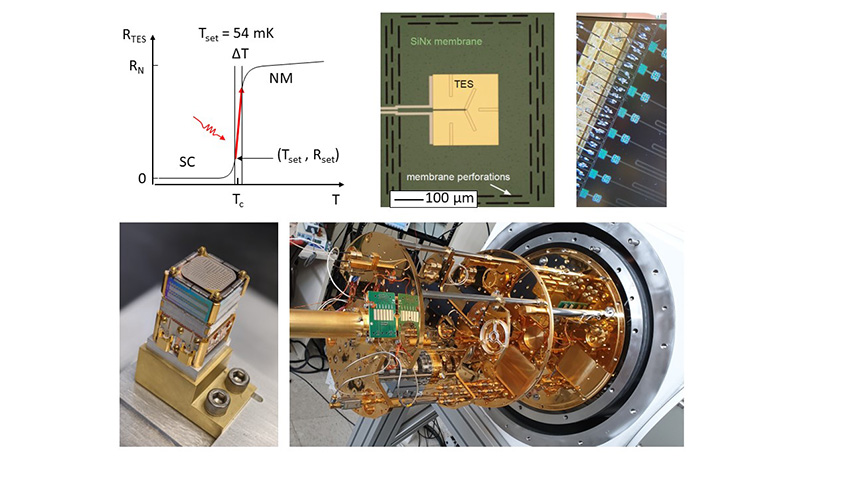Institute Methods and Instrumentation for Synchrotron Radiation Research
Impurity level X-ray Absorption and Emission on Molecules and Materials with AXSYS
The aspect of impurity level detection of active centers in molecules and functional materials has remained a huge challenge for synchrotron based soft X-ray spectroscopy. The shift away from optical grating based spectral detection to ultracold milli-Kelvin superconducting bolometric calorimetry is a game changer with orders of magnitude increased detection efficiency. Together with Prof. Serena de Beer from the Max-Planck-Society and joint technology development with NIST in Boulder, Colorado the next generation of Transition Edge Sensor (TES) technology is fielded now to see with soft X-rays the impurity states in molecules and materials so far inaccessible.


The TES detector consists of an array of 250 superconducting sensors integrated in the microsnout device, where each sensor is connected to a superconducting quantum interference device (SQUID) to measure the change of resistance of the sensor when a photon is absorbed. The detector is connected to a dilution refrigerator to reach the 54 milliKelvin operation temperature.
